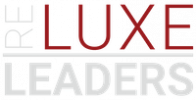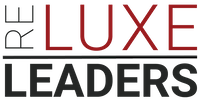In luxury real estate, the relentless pace and pressure that come with closing high-value deals put extraordinary demands on every team member. That’s why team energy optimization in real estate isn’t just an HR nicety—it’s a critical lever for performance and profitability. Without a clear strategy to manage and maximize the collective energy of your team, burnout becomes inevitable and scaling your business sustainably stays out of reach.
Elite real estate team leaders know that optimizing energy isn’t about pep talks or ping-pong tables. It requires integrating measurable, tactical systems into daily operations—systems that elevate individual capacity, enhance collaboration, and ultimately drive revenue growth.
The Business Case for Team Energy Optimization in Real Estate
Studies repeatedly show a strong link between workplace energy management and business outcomes. According to the State of the American Workplace Report, engaged and energized teams deliver higher productivity, lower turnover, and stronger client results. For luxury real estate, where client experience and market agility matter, the stakes are even more pronounced.
Top-tier teams exhibiting consistent energy management report improvements in key metrics like lead conversion rates, average sales volume, and agent retention—proving that energy optimization directly scales profitability. Energy isn’t some vague concept; it’s quantifiable and manageable through deliberate leadership.
Core Energy Optimization Strategies for Real Estate Teams
Building High-Performance Routines Aligned to Roles
Customizing energy routines for the nuance of different roles in your team separates average managers from elite leaders. Listing agents, who juggle high-pressure negotiations and client engagement, require peak cognitive endurance from 10 a.m. to 3 p.m., while buyer agents benefit from flexibility later in the day for showings. Administrative staff thrive with structured task batching scheduled to avoid energy drain.
Establish role-specific practices such as mandatory micro-breaks, hydration protocols, and intentional transition rituals between tasks. These small operational tweaks lead to sharper focus and fewer costly mistakes over time.
Embedding Energy Management into Team Culture
Beyond individual habits, sustainable energy optimization happens when leadership ingrains it into the team’s DNA. This means setting expectations around work hours, prioritizing mental recovery, and normalizing discussions about burnout.
Advanced leaders promote resilience by recognizing ‘small wins’ and reinforcing positive behaviors, a tactic supported by insights from the Harvard Business Review. This daily reinforcement builds momentum and establishes energy-smart habits as a shared priority, not a solo mission.
Leveraging Technology to Track and Boost Energy Levels
In 2024, managing team energy without technology is like navigating luxury markets without data—inefficient and risky. Several platforms now provide actionable analytics on team workload, stress indicators, and recovery cycles, allowing leaders to intervene proactively before burnout sets in.
Integration of wellness reminders, energy tracking apps, and AI-driven schedule optimization tools can cut through noise and enforce healthier patterns seamlessly. Coupled with regular check-ins, this data-driven approach helps maintain peak productivity month after month.
Energy Optimization as a Recruiting and Retention Lever
High-performing agents no longer accept roles that disregard their well-being. Incorporating energy-friendly policies into talent acquisition and retention strategies differentiates elite luxury teams in a competitive market.
From onboarding that emphasizes energy management training to ongoing support resources, teams that prioritize sustainable energy cultivate greater loyalty and reduce costly attrition. This creates a virtuous cycle: energized agents perform better, attract others, and fuel growth.
Case Example: Scaling with Energy Optimization
A top 5% luxury brokerage recently embedded a comprehensive energy optimization program across its 40-agent team, blending tailored schedules, resilience coaching, and wellness technology. Within 12 months, they experienced a 22% increase in closed transactions and a 30% improvement in agent retention rates. This wasn’t luck; it was the payoff for treating energy as a measurable business asset.
Conclusion
For elite real estate team leaders, team energy optimization in real estate is the most underleveraged performance driver on the market. When you move beyond surface-level wellness initiatives and embed energy management into every operational facet, you unlock lasting productivity gains and sustainable scaling.
Leadership in luxury markets demands more than just managing transactions—it requires strategic stewardship of your team’s capacity. Are you equipped to optimize energy at scale?
Take the next step: Book a confidential strategy call with RE Luxe Leaders™ to build a customized energy optimization blueprint for your team and start converting well-being into measurable profit.
For more on building resilience and leadership energy management, explore Forbes’s expert breakdown on five ways to build resilience in your sales team.





